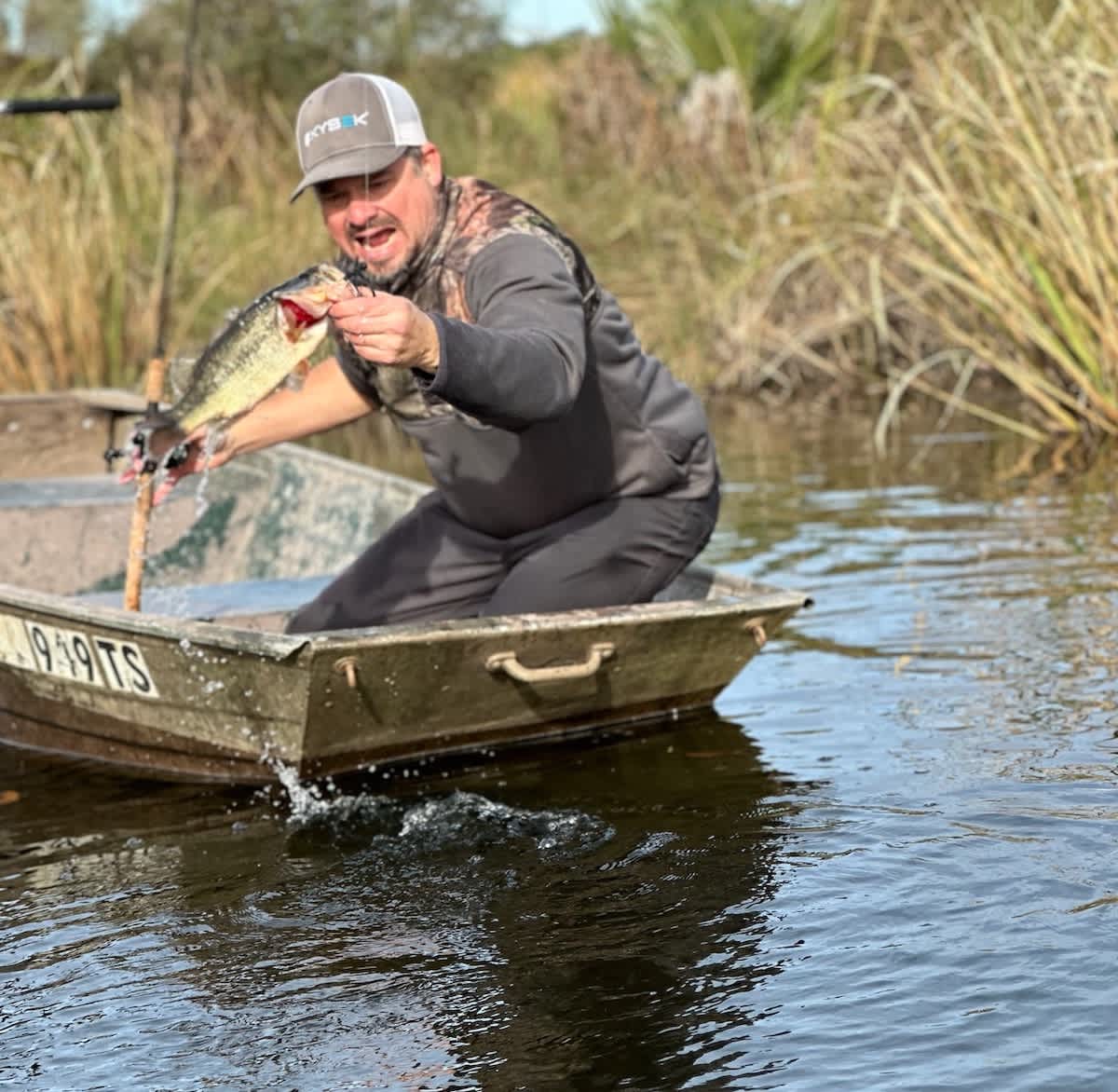“But it’s too cold to fish!” Make these Wintertime Adjustments to Catch More Bass in January!
Keith Lusher 01.13.25

Every winter, it happens. I get all hyped up to make a fishing trip. Everything is ready – rods strapped in, batteries charged, and the boats hitched up. Then I walk outside, and I’m hit with 30-degree air, and something in me says, “This is not worth it,” but I push forward. I’m sure you’ve been there as well.
You ask yourself: “There’s no way bass are going to be feeding in this weather, right?” After years of winter fishing, I’ve learned that couldn’t be further from the truth. Let me share what I’ve discovered about catching bass in January.
From my experience, when water temperatures drop into the upper 30s, bass are really tough to catch, so I’m not going to sit here and tell you that you can catch bass all winter. When the water gets this cold, these fish enter survival mode; after all, it’s what they’ve prepared for all fall and early winter.
Prime temperature for catching bass
I consider the prime water temperature for catching winter bass to be 45-50 F.
When fishing in water that’s 45-50 F, I’ve noticed some consistent patterns. Here are a few observations that I have made over the years:
- Bass become incredibly sluggish (trust me, I’ve learned this the hard way)
- Most bass retreat to waters deeper than 15 feet
- Over the years, I’ve observed their strikes become much more deliberate and measured

It took me years to fully appreciate how winter transforms our lakes and ponds. By January, most of the summer algae has died off, leaving us in the South with clear water. In the lakes where I fish, I can always tell winter has arrived when that dark green tint appears, signaling clean, clear conditions.
After many frustrating trips, I realized that line choice becomes crucial in these clear conditions. Here’s what works for me:
- Use Lighter Line: I’ve switched to using 6-10 pound test line for most of my winter fishing. I can’t tell you how many more bites I get with lighter line, especially when targeting those line-shy bass.
- Use Fluorocarbon: I’ve become a big believer in fluorocarbon line for winter fishing. In my experience, it’s practically invisible underwater, which has made a huge difference when I’m drop-shotting in clear water. Use a low-visibility line if you’re dead set on using braid or mono. I’ve succeeded with many low-visibility variants when fishing in extremely clear conditions. My favorite line to use is Seaguar Tatsu fluorocarbon. If you can get past the price, this line will handle every situation, including spinning, casting, and finesse fishing.

Through years of trial and error, I’ve completely transformed my approach to presenting baits. I’ve learned to forget those fast-moving reaction baits – they just don’t do the job in cold water.
These days, I focus on slow, deliberate presentations that match the lethargic mood of winter bass:
- I make sure to keep my lures in the strike zone much longer than I would in summer, giving those sluggish fish plenty of time to commit.
- I’ve found remarkable success targeting deeper structure, where the bass tend to congregate in more stable water conditions.
- Perhaps most importantly, experience has taught me that you need to put baits right in front of their faces – winter bass rarely chase down their meals, so precision is crucial to getting bites.
If I had to choose one bait to fish with in January, it would be Z-Man’s TRD stick bait on a Ned Rig. The lure seems custom-made for creeping across the bottom in a slow, methodical style.

Most anglers don’t realize that January offers some of the least pressured water of the year. I’ve had some of my best days on the water during winter simply because there’s hardly anyone else out there. On my latest trip to my old stomping ground, I witnessed zero boats on the water. Not one! This means there were zero lures in the water, which translates to my lure being the only show in town.
Through years of cold-weather fishing, I’ve discovered that success comes down to understanding how bass adapt to winter conditions and adjusting your approach accordingly. It might take some practice, but I’ve found winter fishing incredibly rewarding once you crack the code.

